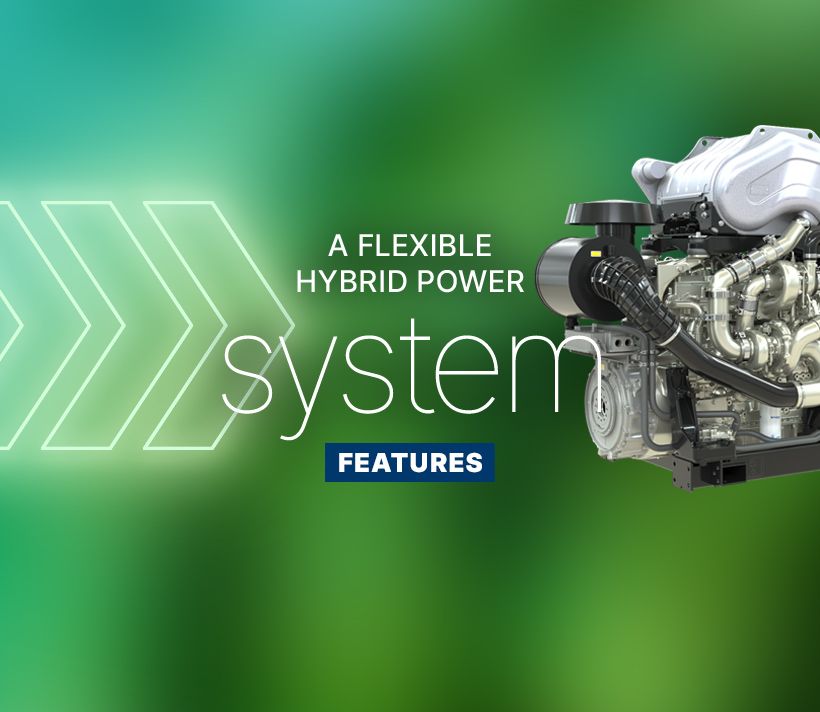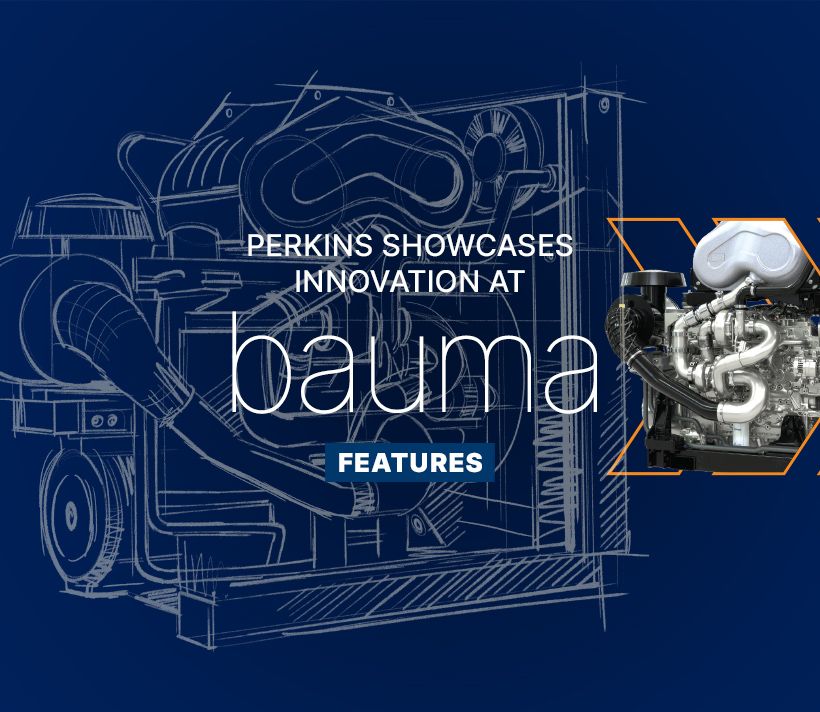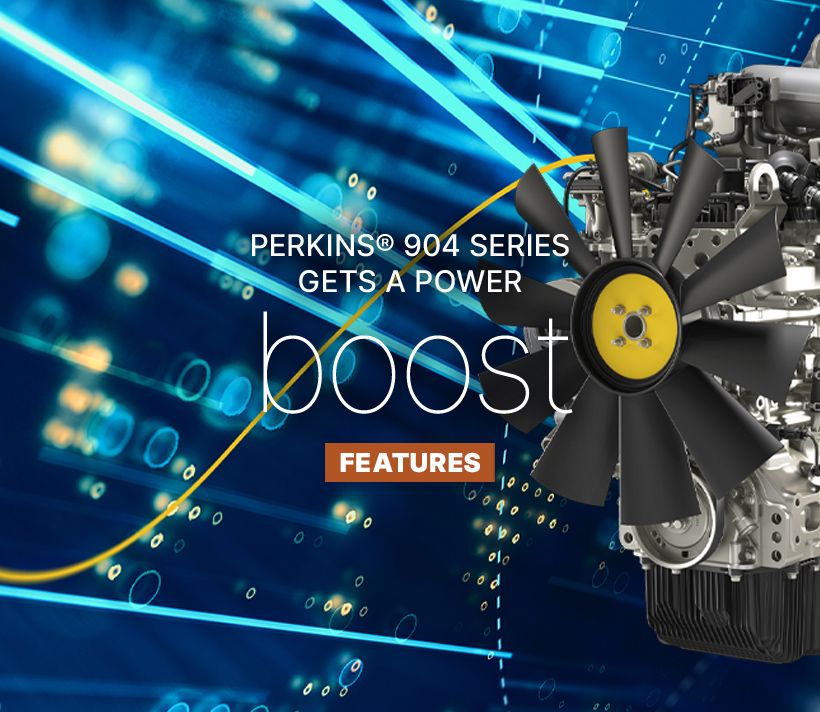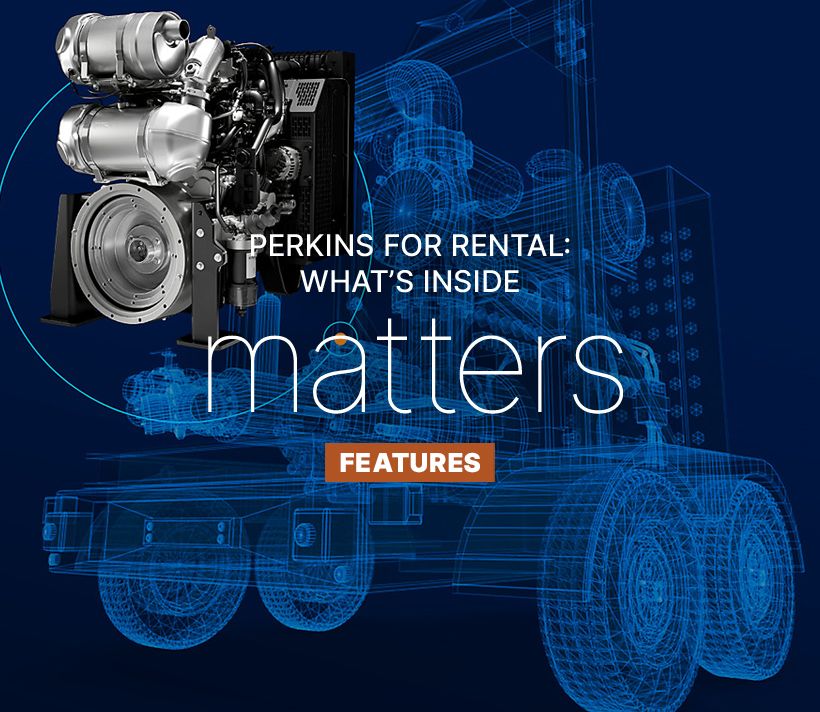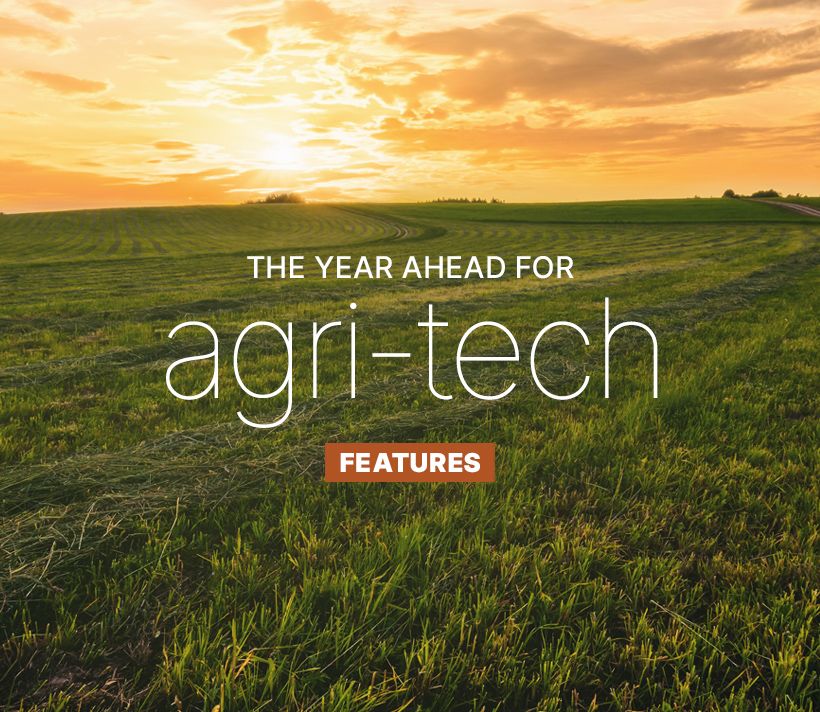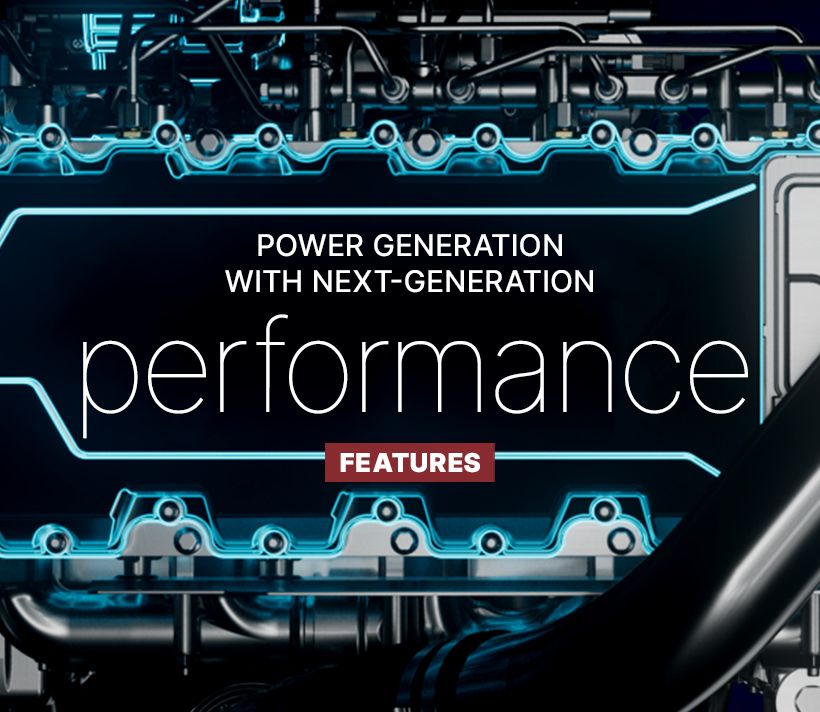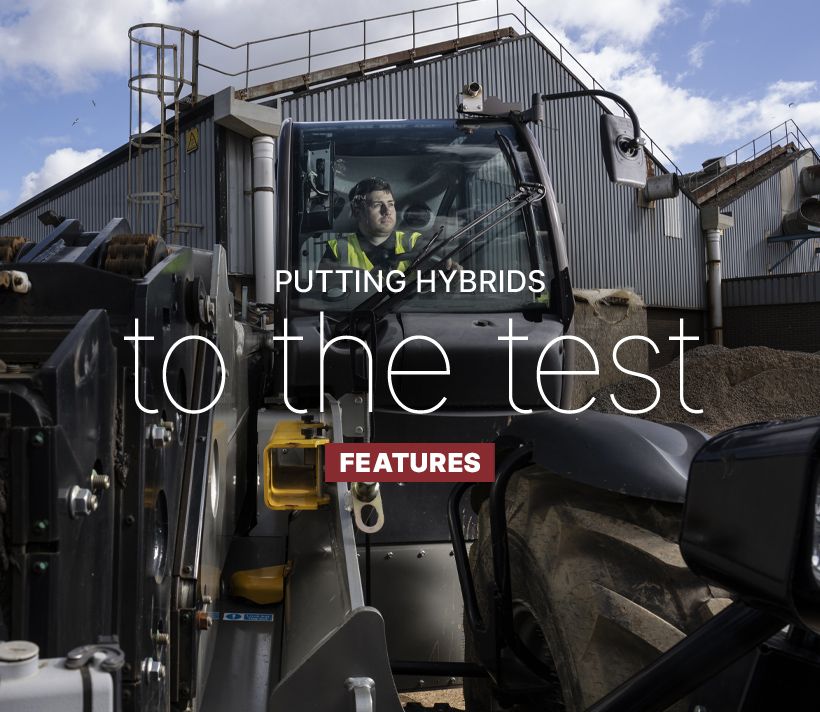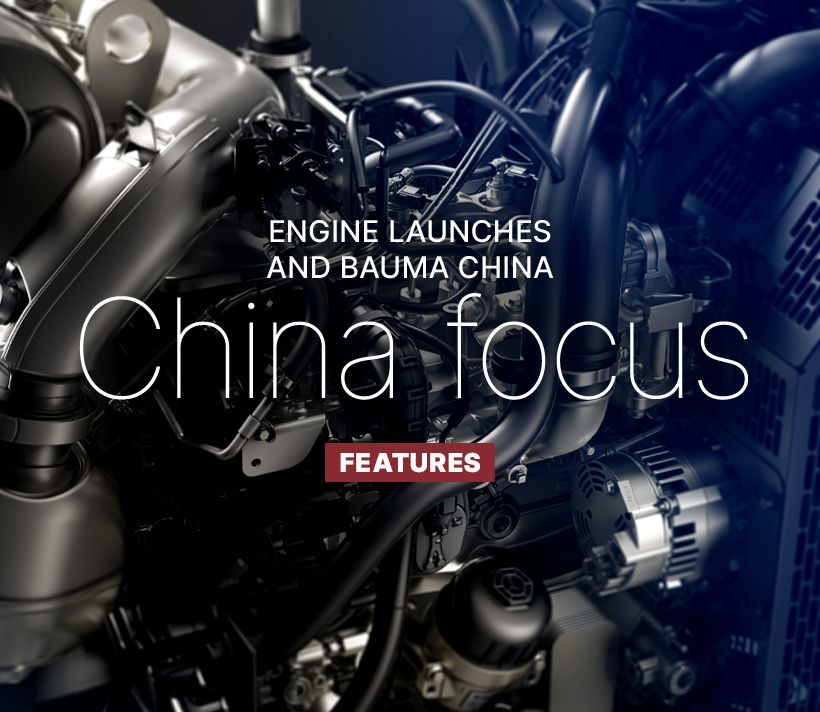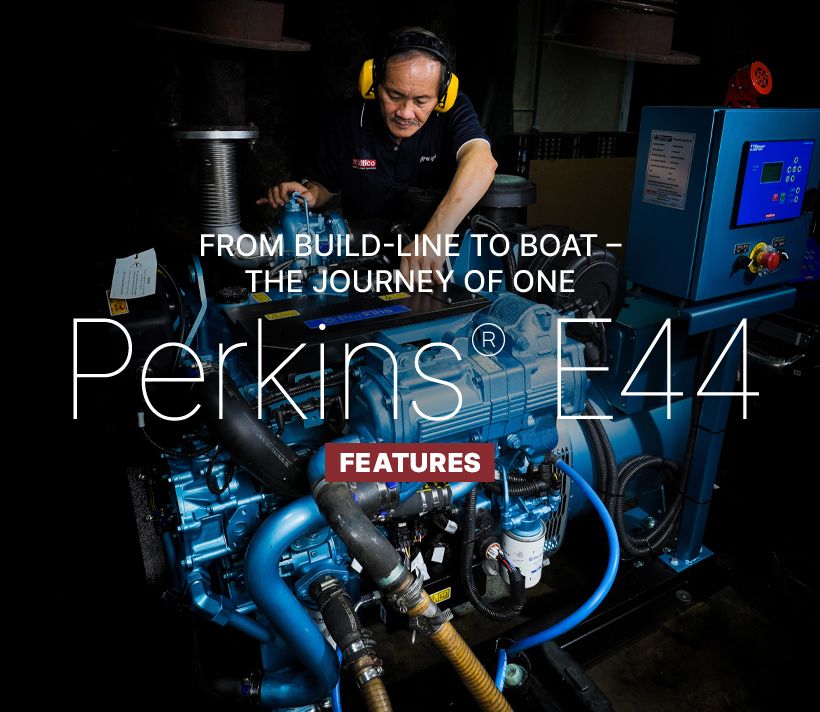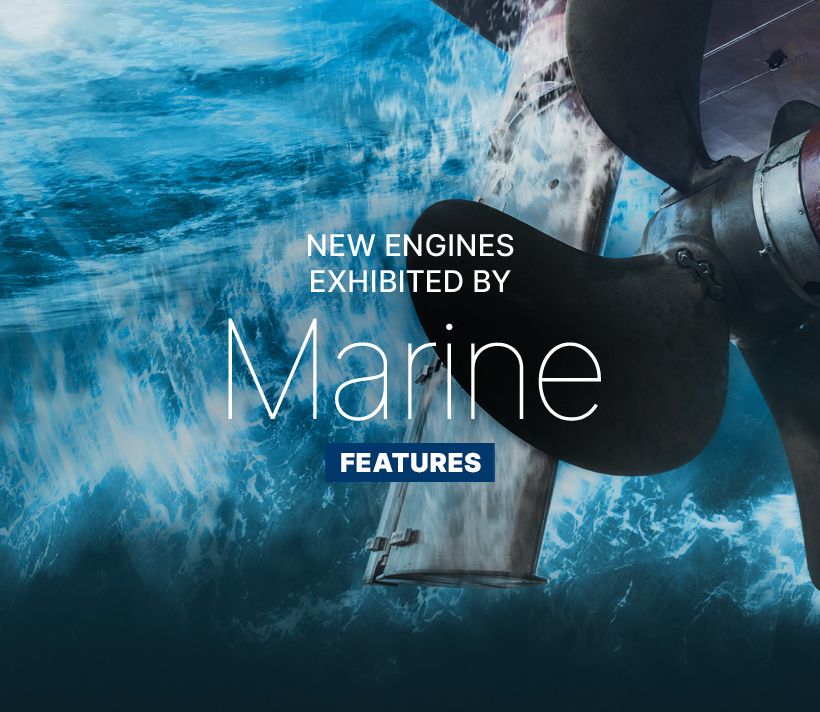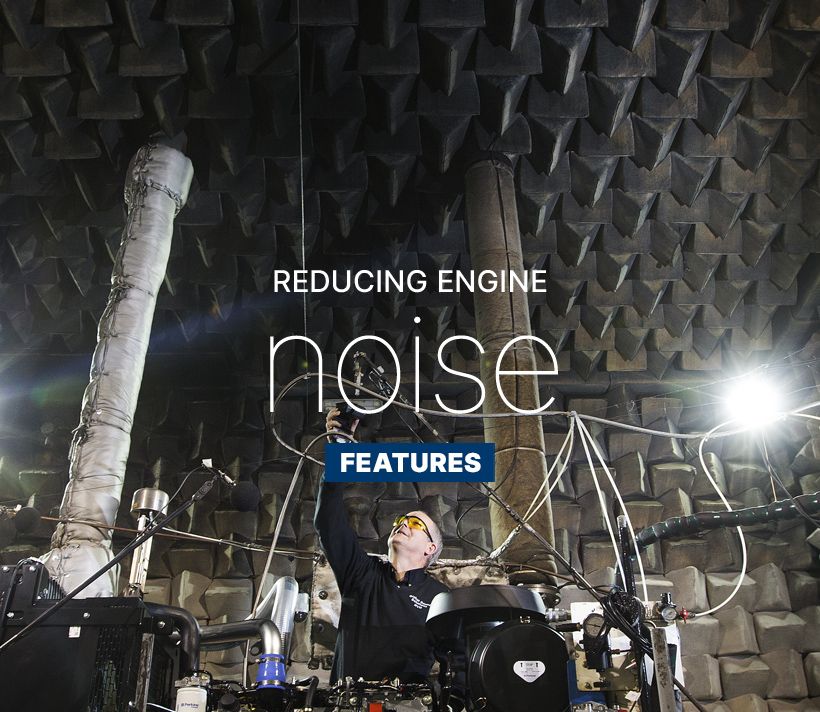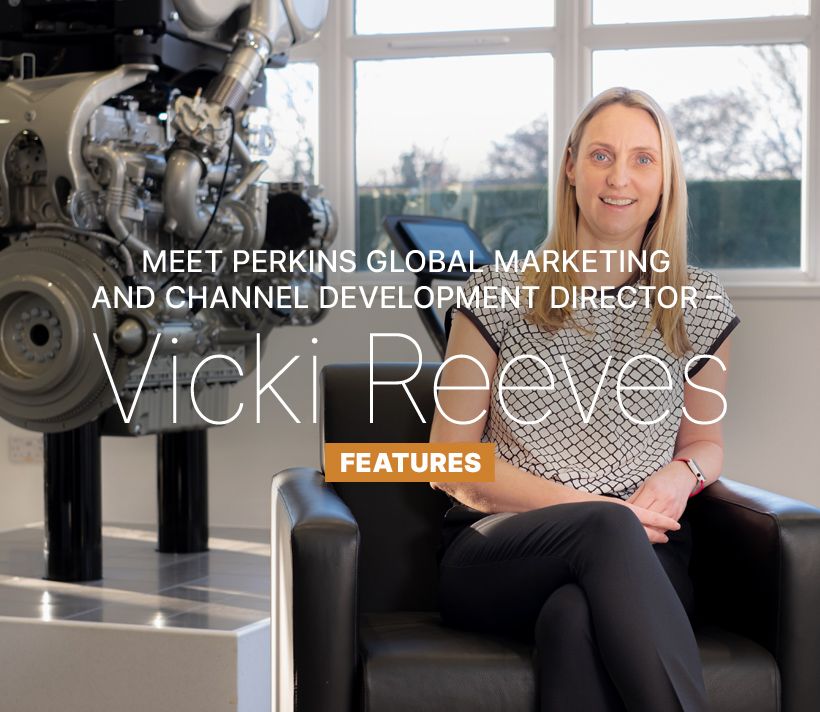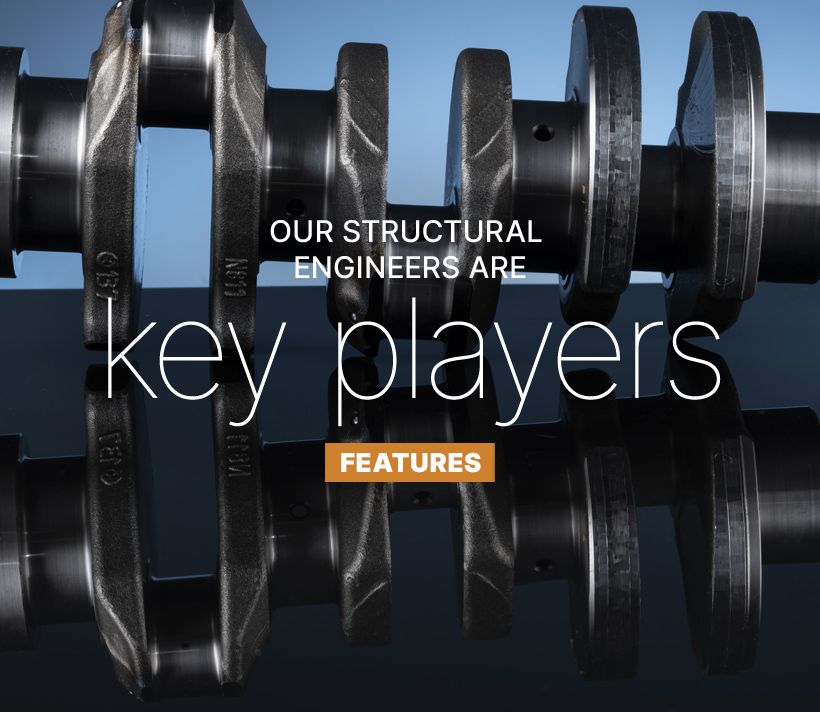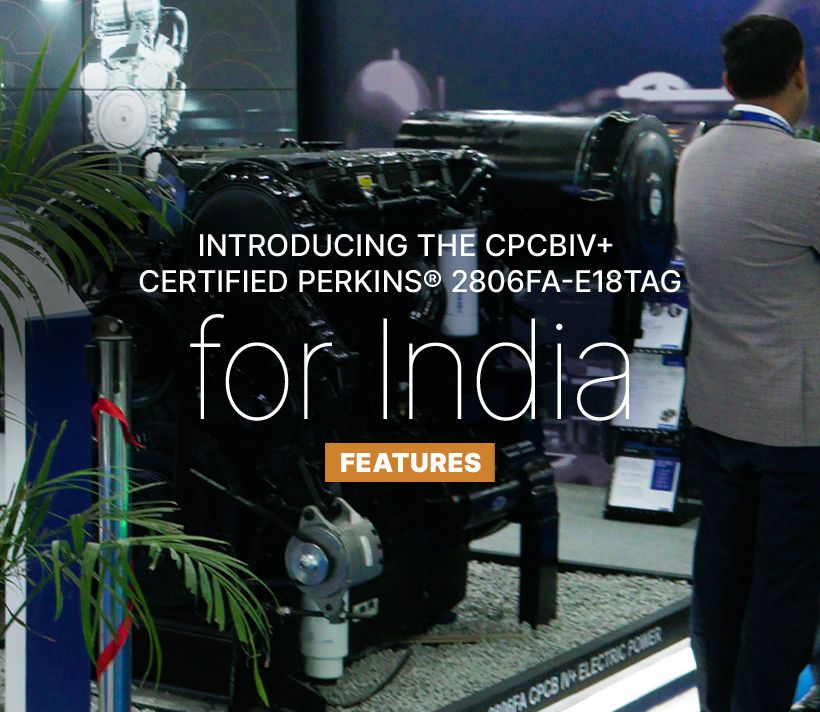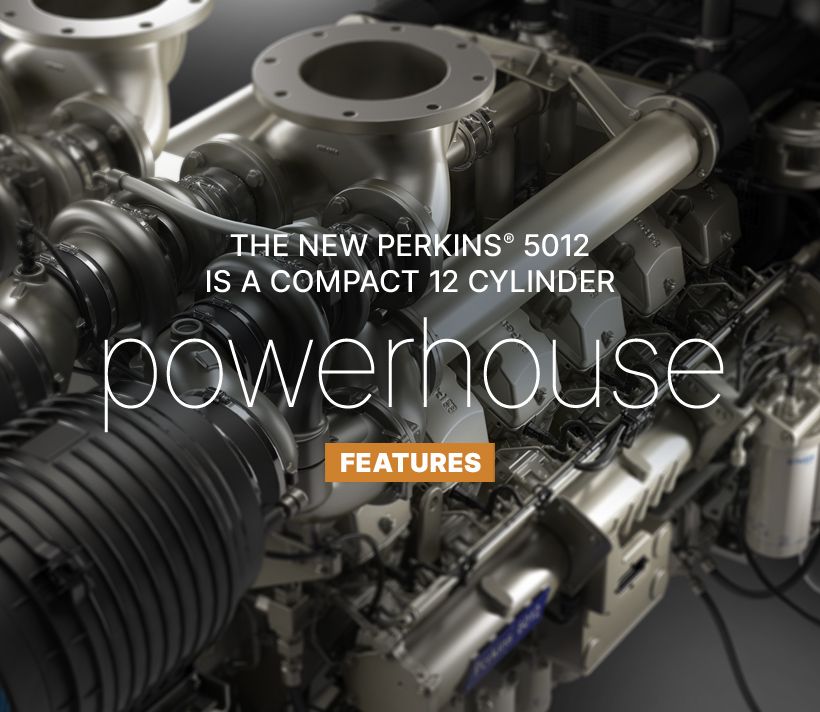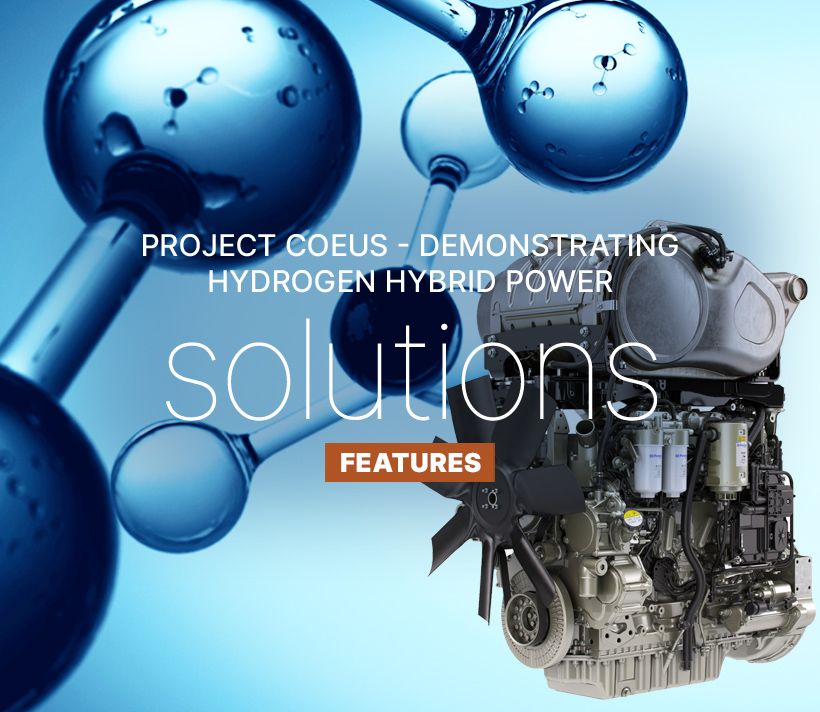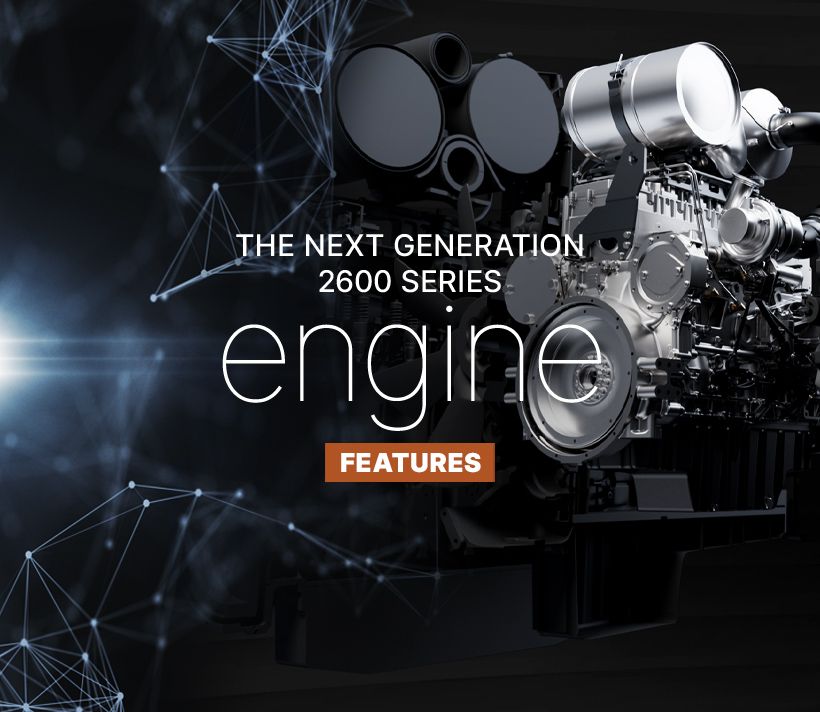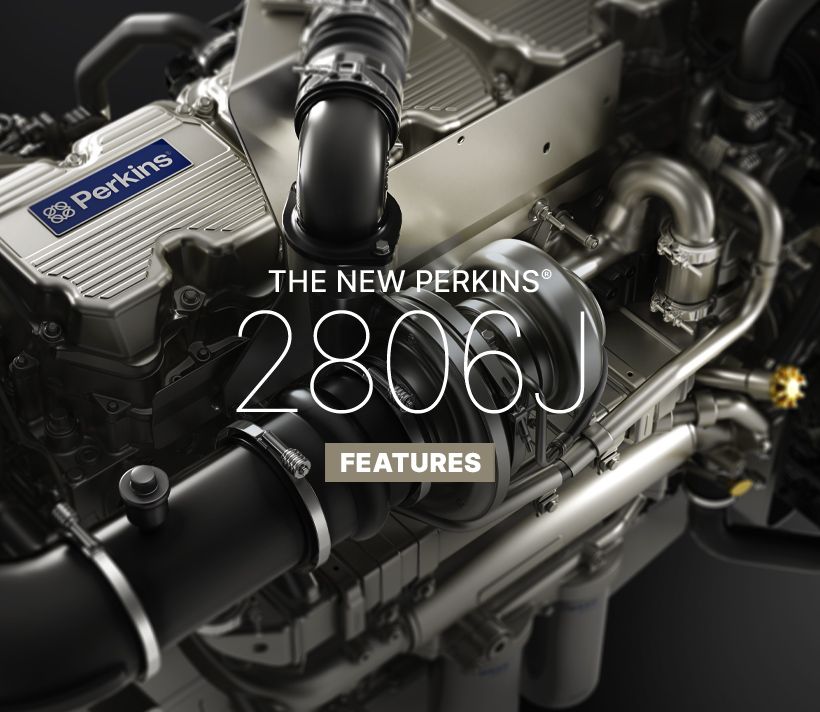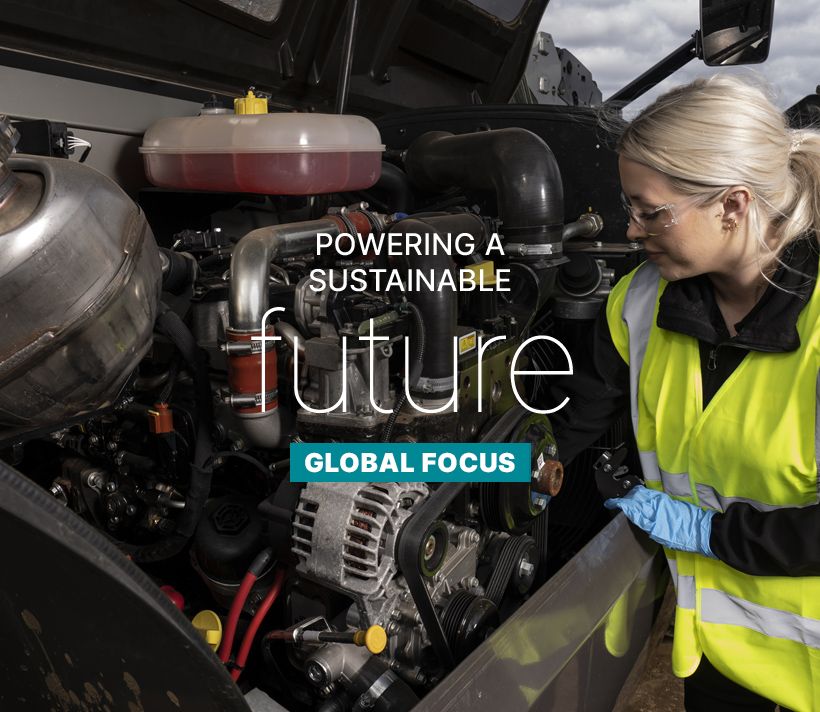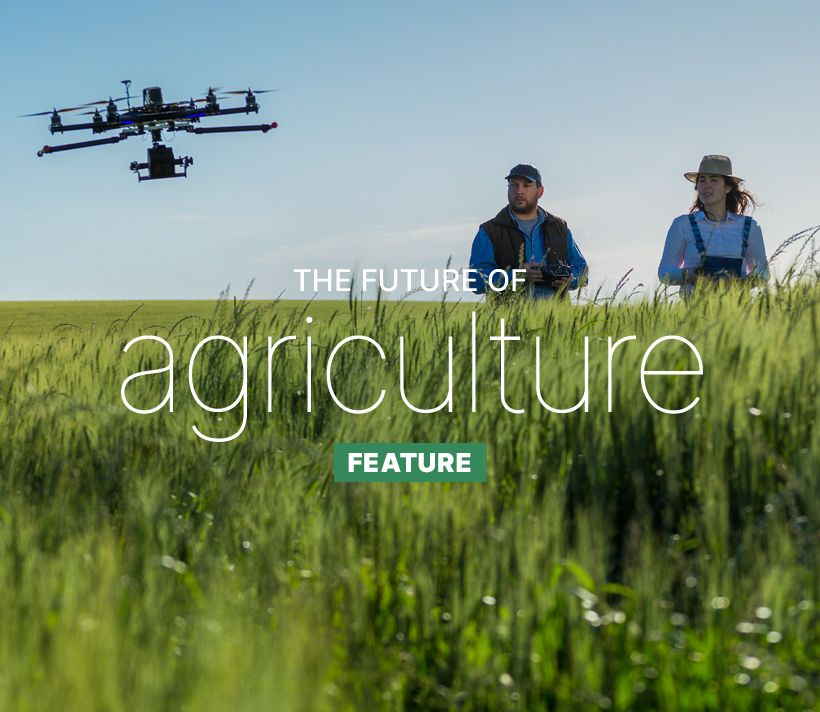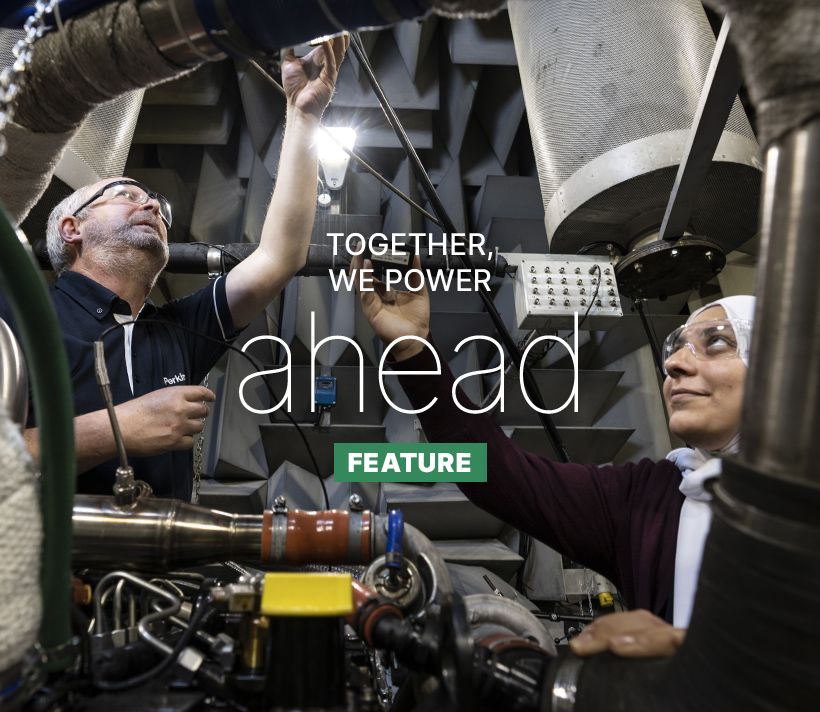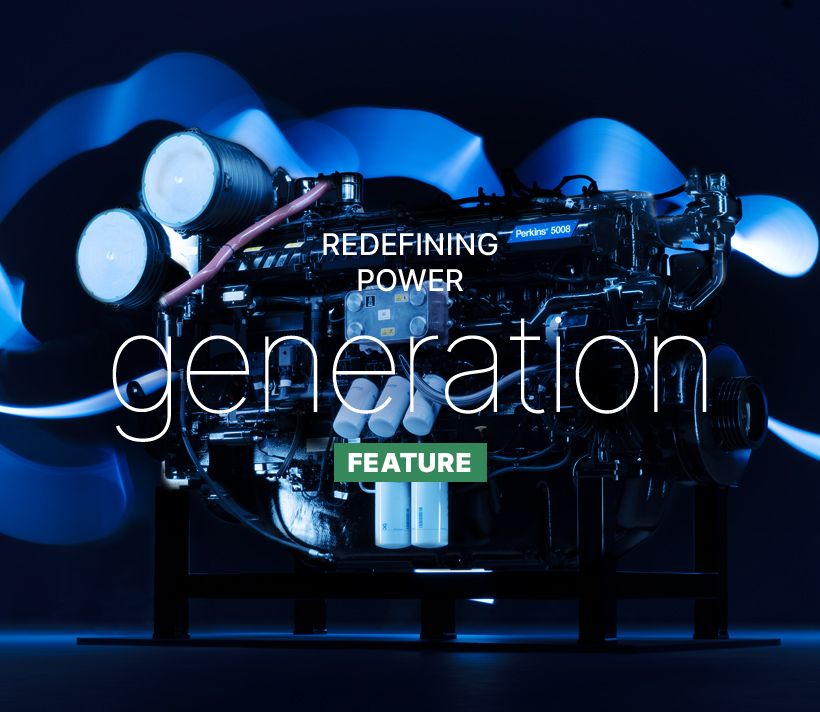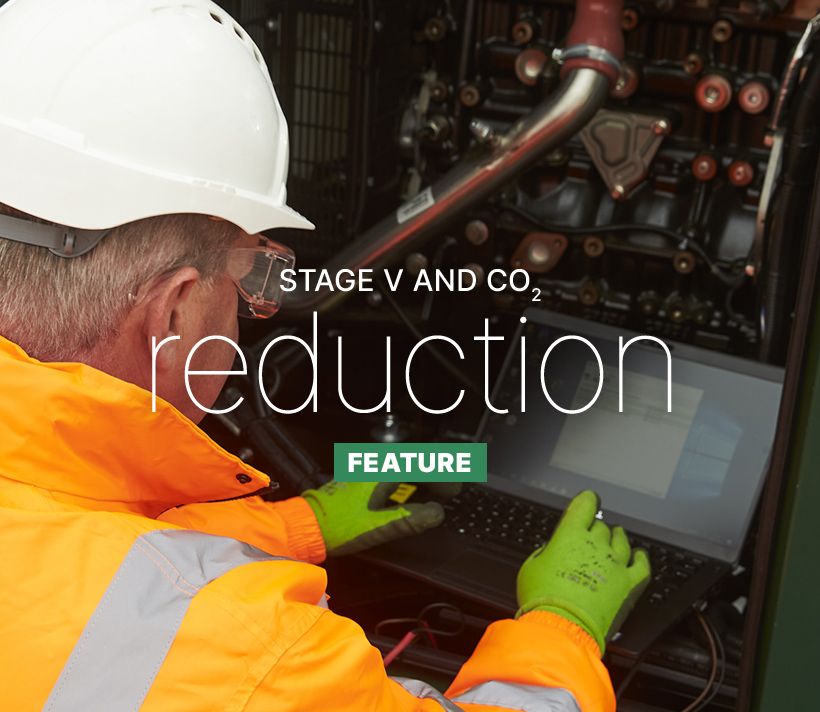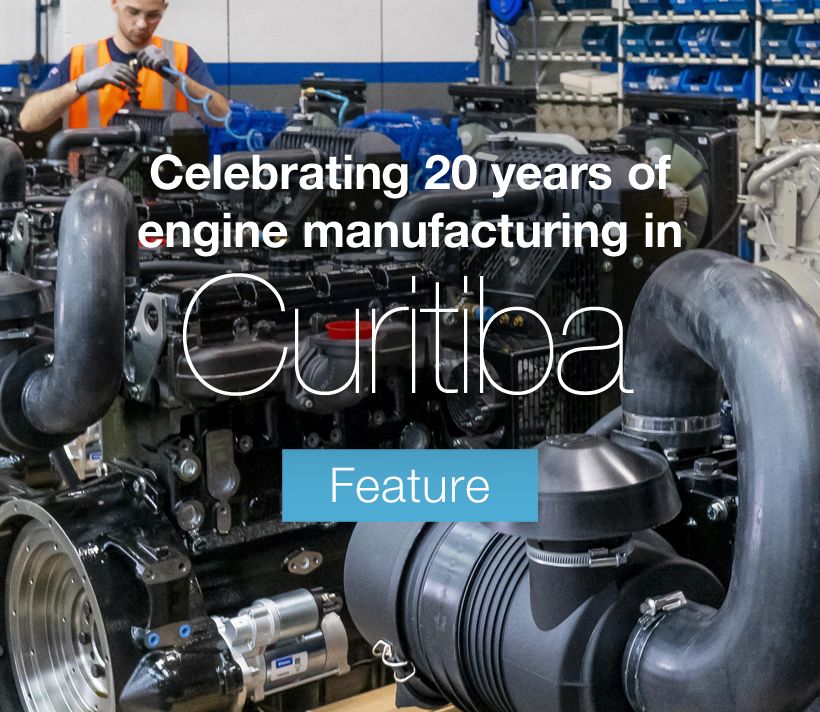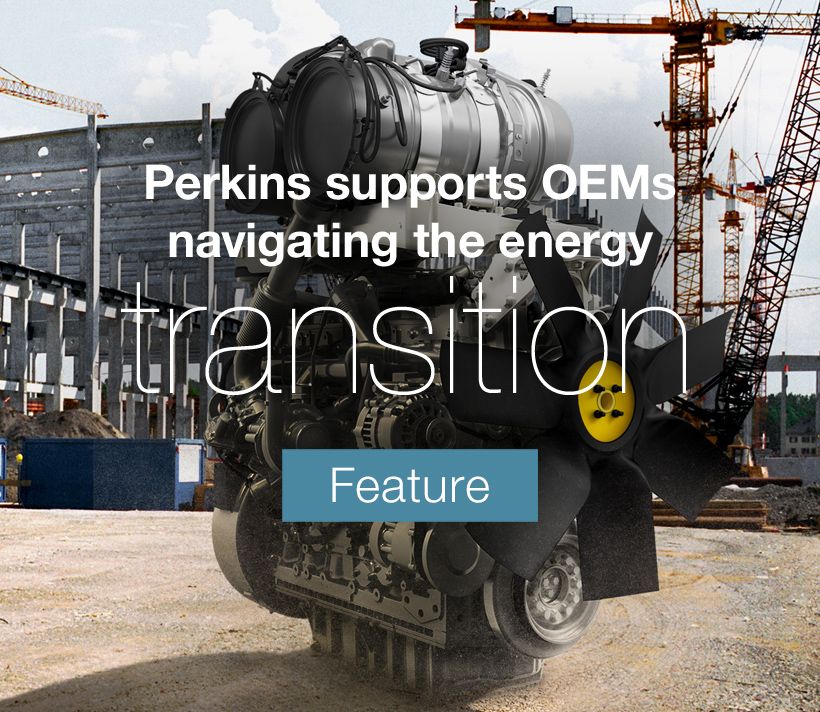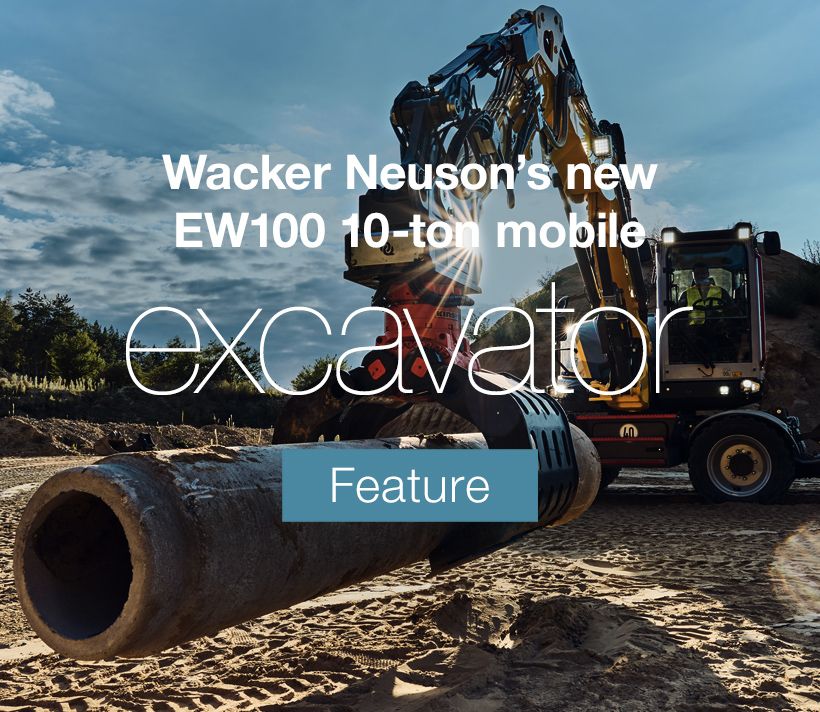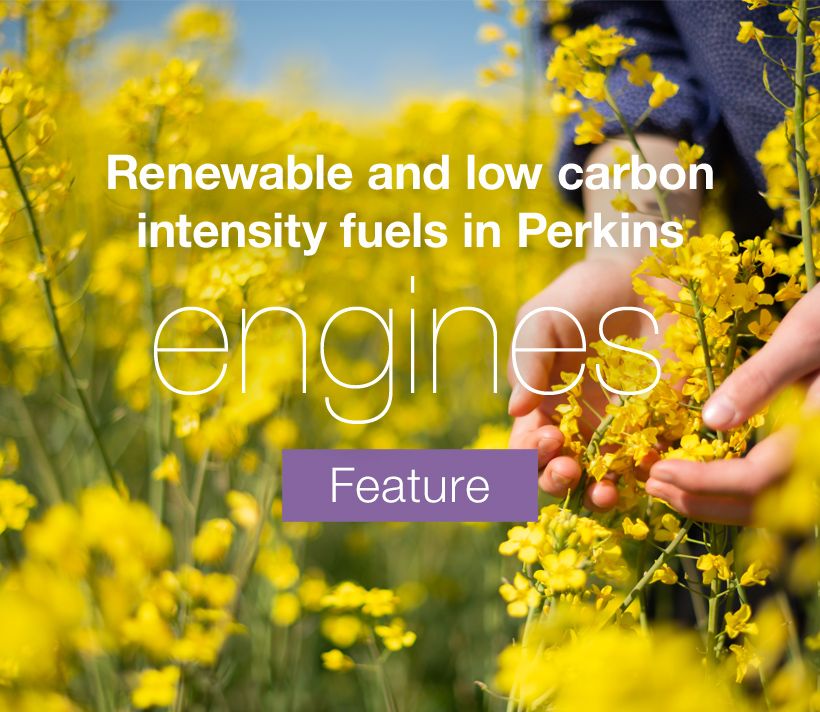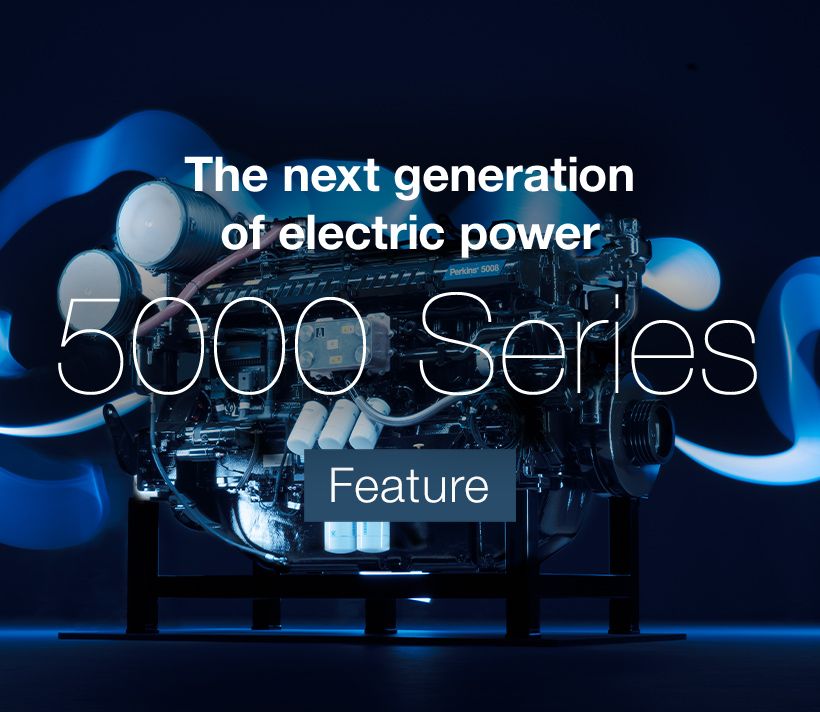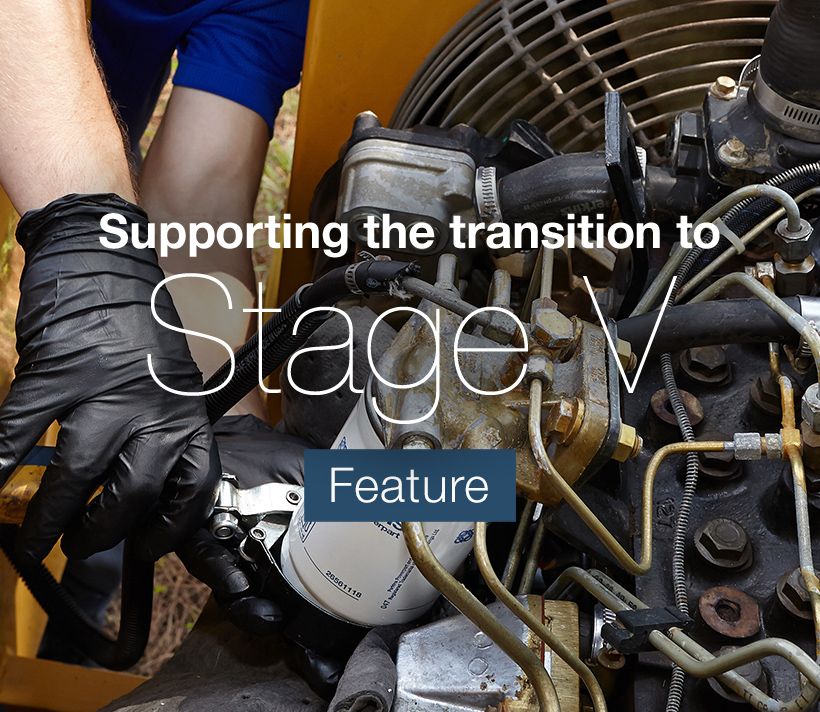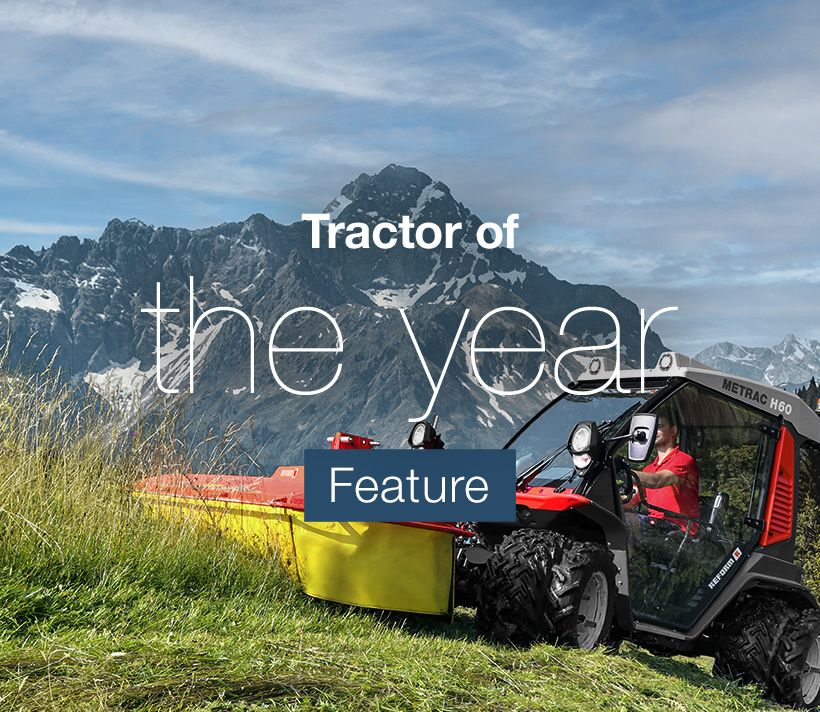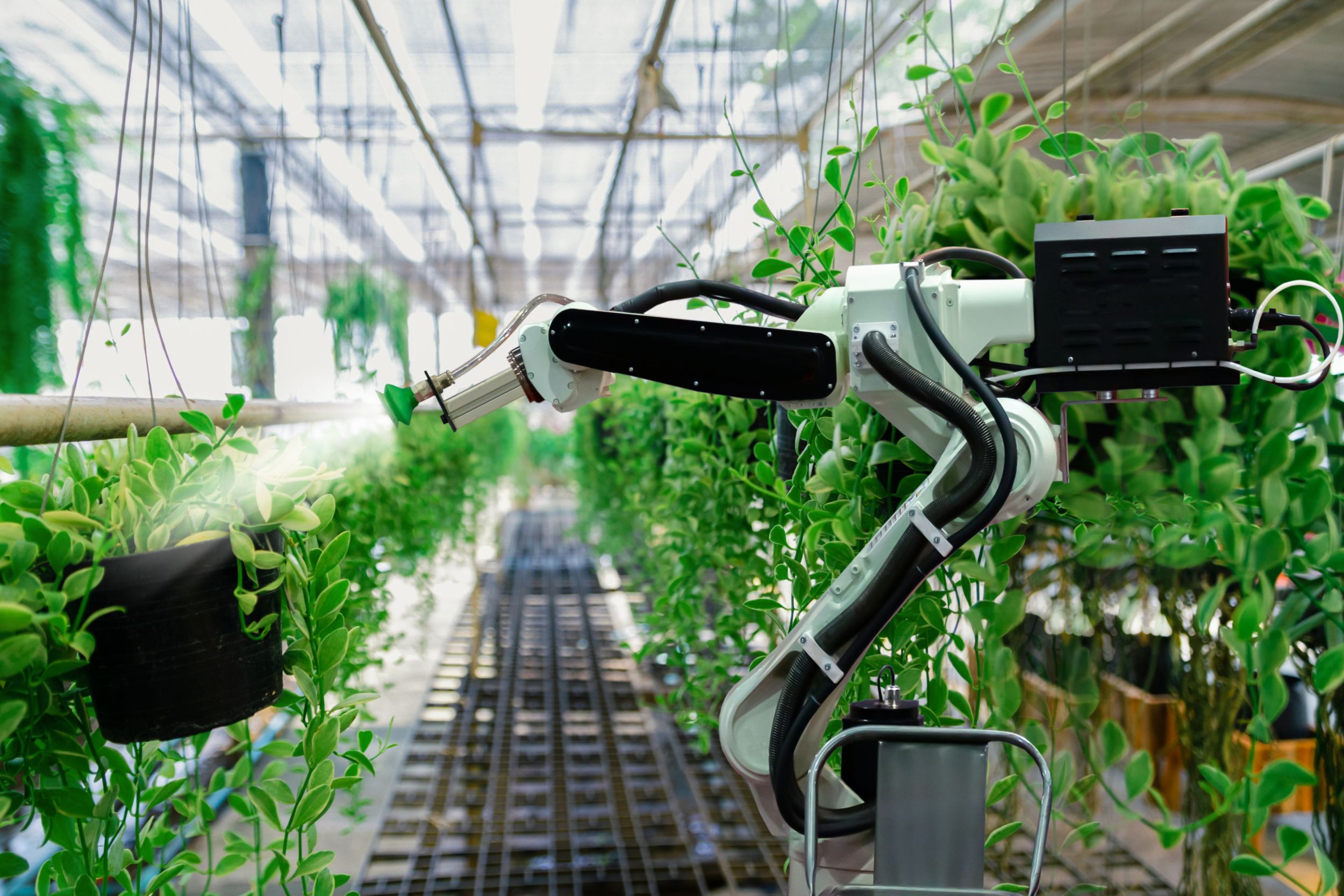Always ones to embrace a new opportunity, the same Customer Solutions and Engineering teams have also been busy working on the electrification of a wheel loader. Powernews headed out to Malaga, Spain, to learn more about the project and see the machine in action.
"It's been a really exciting project to be involved with,” explains technical sales manager Paul Muller. “In laymen’s terms, we’ve removed an engine from a wheel loader and replaced it with a battery, which we’re now testing in the very warm Spanish heat.
“Perkins has over 90 years of experience in the off-highway industry and that's going to continue, but the reason we're going to be successful is if we make sure the products that we're creating are well validated, well tested. So, we're here in Spain doing that testing so the customers don't need to.
“All this work gives our OEMs confidence in the products we’re developing, the services and ecosystems we're offering and really that assurance that they can rely on Perkins to give them performance that they're used to from our diesel engines, but just in a different form, in this case, electrification.”
"It's critical to test the battery in the higher ambient temperatures that we know our customers expect to operate in,” says Alan Davies, lead design engineer. “We’ve taken the wheel loader to operate in the freezing temperatures in Sweden and now we’re at the other extreme in Spain, so as we can learn everything, we need to, about the battery in these operating conditions.”
“You might say, okay, am I really going to go and operate in the Arctic Circle with a machine like this,” adds Adam Stubbs, senior control systems engineering specialist. “Am I going to operate in the warm conditions outside? Potentially not. But what we can now do is show everybody the impact of the freezing cold and the searing heat on these components.”
“We want to help our customers understand what they need to do when they want to move towards electrification, so we decided to do it ourselves and take on board all the learning along the way”, explains Adam.
“The design considerations when we were given this machine started with a 3D scanning of the machine so that we could understand the space constraints. And then we were able to do the design work in the 3D software. But a lot of it was us as a team looking at it thinking, okay, how do we do this?
“Much like our customers are in that phase as well, we put a lot of content into this machine that we perhaps wouldn't do in production. We've got a lot of equipment on this machine to keep the battery, motors and inverters cool. It’s only when we got the machine that we started to understand, okay, how does everything fit in here?”
Paul adds: “It's been a great learning experience from the beginning to end, getting the machine in, doing the conversion and then taking it to Sweden, doing the cold weather testing it, bringing it here to Spain to do the hot weather testing. It’s been an interesting and insightful project to do. We've learnt so much from doing this. And of course we can share this information with our customers, so come and talk to us, and we'll tell you what we've done, what we've learnt from it and how we can help them be successful in their projects.”
“Yes, the questions we receive from our customers include ‘how does it drive?’ and ‘what does it feel like?’,” says Alan. “The machine that we've got here uses the same attachments on the front as a diesel engine. If you're sat in the seat, it would drive and function the same as a diesel engine. So, everything with the pedal control, the steering, the lift and tilt, all of that's the same experience. You just don’t have the noise around you.”
He continues: “We need to build that confidence that you can go out to a job site with half a charge, or three quarters of a charge, and still complete what you need to do and bring the machine back. And, that's what this demonstrator machine is there for.”
“We've been looking at various different charging scenarios, looking at using AC charging, which is a bit slower but more available, but then also looking at DC fast charging and how we can really quickly charge the battery back up and get it to use,” says Paul. “And that's why we're doing the testing here. You know, running in high ambience really sort of stresses the system out.”
He continues: “On the battery itself, we've got a telematic system that allows us to monitor the battery, see what's happening with it, be able to give feedback to the end user and to the OEM about how the battery's being used and how to optimise their usage of it.”
“Flexibility is what Perkins really want to offer our customers,” says Alan. “There’s no one solution for everybody. We're here to customise our solutions to be the best offering, with the right service and support for all our customers, whatever offering or range of offerings they want to take from us.”
Paul adds: “I’d encourage customers to come and talk to us and learn more about what we’re doing and have learnt. We’d love to talk with you.”
Learn more about Perkins’ journey to electrification at the Perkins stand – Hall A4, Stand 336 – at bauma Munich in April 7-13, 2025.

Why stick to one fuel, when you can have a configurable power system?
Read moreMore than just a curiosity, they offer us different routes to future food security.
Read morePerkins marine engines has an illustrious history. Meet the team behind the brand.
Read morePower systems, services and technologies engineered for efficiency, productivity and fuel flexibility will be on show.
Read moreDelivering dependable prime and standby solutions with the 13 litre 2606 and a 46 litre 5012.
Read morePerkins has announced a power uplift to the popular 3.6 litre variant.
Read moreWe chat to Corey Berry following the successful showings at American Rental Association (ARA) and United Rentals exhibitions.
Read moreWhat might the coming months hold? Powernews does some opinion legwork, so you don’t have to.
Read moreThe Perkins marine distributor network is there to service customers of Perkins anywhere in the world.
Read moreAvailable in the second half of 2025, the 2600 Series offers excellent load acceptance, fuel efficiency and versatility.
Read moreHow our Customer Solutions and Engineering teams are actively helping customers reduce fuel consumption.
Read moreThe state’s farmers grow more than 400 commodity crops, 19 of them unique to the Golden State.
Read moreMore than 280,000 visitors from across the world attended this year’s four-day long Bauma China exhibition in Shanghai.
Read moreWe follow the journey from a Perkins facility in the UK to installation on a passenger ferry in Singapore.
Read morePowernews caught up with Sylvia to learn more about her responsibilities, motivations, and leadership journey.
Read moreA new range of auxiliary marine engines were shown at METS.
Read moreAdrian Bell dives into the history of Californian agriculture.
Read moreThe importance of thermal fluids simulation.
Read moreHow ‘noise chambers’ help Perkins build quieter engines.
Read moreThe global voice for agricultural equipment manufacturers.
Read moreMeet our Vice President of facility operations.
Read moreThe customer benefits achieved through Perkins’ new connectivity solutions.
Read moreThe new Perkins global marketing and channel development director.
Read moreThings are different when it’s very, very cold.
Read moreEngineering manager Graham Hill explains the importance of structural simulation when designing a new engine.
Read moreThe platform will cover two key power nodes.
Read moreInterview with Susterre CEO Michael Cully on the latest no-till soil solutions.
Read moreA compact 12 cylinder powerhouse.
Read moreFor 60 years Lindner has chosen Perkins engines to power its machines.
Read moreTwo new auxiliary engines powering the marine sector.
Read morePerkins kicks off Project Coeus to demonstrate leading-edge hydrogen hybrid power solutions.
Read moreDependable electric power generation drives sales of Perkins® 4000 Series in India.
Read morePerkins launches the next generation 2600 Series engine.
Read moreAdding to the product range with an 18-litre engine.
Read moreFind out how this vast country approaches agriculture and food production.
Read moreBy re-examining, reimagining, and re-engineering what is expected.
Read moreA clear demonstration of what's possible when a passion for innovation meets a commitment to excellence.
Read moreWith local resources and global support.
Read moreAdvance power solutions from Perkins.
Read morePart three of our series with Dave Robinson.
Read moreJaz Gill talks Perkins new brand strategy.
Read moreThe Perkins® 5000 Series engines generating reliable power for critical applications.
Read moreRental expert Dave Stollery gives his view on the opportunities around rolling out EU Stage V equipment.
Read moreIf you want to get back to engineering, this programme can be the key to making it happen.
Read moreConstantly innovating to meet the changing electric power marketplace.
Read moreAn appropriate environmental, social and governance (ESG) proposition really matters.
Read moreManufacturing industrial engines at our Curitiba facility since 2003.
Read morePerkins Aurangabad celebrates the production of its 10,000th 4000 Series engine.
Read moreThe heart of sustainable power.
Read moreWacker Neuson’s new EW100 10-ton mobile excavator
Read moreOffering a complete solution for off-highway engines in Latin America.
Read moreFifty years of support for the written word in agriculture.
Read morePerkins rental industry commitment continues to grow.
Read moreRenewable and low carbon intensity fuels in Perkins engines.
Read moreSupporting the STEM development of future generations.
Learn MorePart 2 of our three part interview series with Perkins’ Dave Robinson.
Read moreThe launch of the complete range of 5000 Series full authority electronic engines.
Read morePerkins is actively supporting the rental industry's transition to the latest EU Stage V technologies.
Read morePowered by the compact and powerful Perkins® 904 Series.
Read morePerkins EAME business development director Dave Robinson writes on 'power on the farm'.
Read moreThe Perkins Rental Support Programme has already been adopted in some form by virtually every significant rental business in the world.
Read moreDid you know that Türkiye is the world’s fourth-biggest tractor market? Take a closer look – from an agricultural perspective – at this fascinating country.
Read moreThe Perkins® 904 Series family of Industrial Open Power Units provide customers with ‘plug-and-play’ engines that often can be fitted to a broad range of equipment.
Read moreThe Curitiba plant has delivered more than 300,000 engines since 2003 including engines meeting MAR-1 emission standards.
Read moreWhy the popularity of telehandlers is reaching new heights.
Read moreWhy data has become a priceless commodity in modern construction.
Read moreTalk of reaching ‘net zero’ is frequently discussed, but what does net zero look like for agriculture?
Read moreWhy the rental industry is so well placed to support sustainability goals.
Read moreWould you buy a diesel-powered mobile phone?
Read moreDiscover more about the benefits of moving to Stage V power.
Read moreWho will be the farmer of tomorrow and what skills will they have?
Read moreWhat role will this industry icon play in tomorrow's industrial world?
Read moreLow noise, vibration and harshness is important to both OEMs and the end user.
Read moreInsatiable demand for data in South Africa is driving a huge growth in data centres.
Read moreWhat does urban construction look like over the next decade?
Read moreThe electric charge: how access to reliable power is fuelling prosperity across the globe.
Read morePutting the shine on sustainability.
Read morePutting people into plant.
Read moreRevolution through evolution.
Read moreCollaboration: in search of excellence.
Read moreThe future of diesel-driven power generation keeps getting brighter.
Read moreWhat are the key benefits of downsizing engine capacity in the materials handling.
Read moreHow can manufacturing businesses move stock like clockwork?
Read moreImportant information and tips to make the best decision for your next job.
Read morePerkins has announced a power uplift to the popular 3.6 litre variant.
Read moreWe chat to Corey Berry following the successful showings at American Rental Association (ARA) and United Rentals exhibitions.
Read moreWhat might the coming months hold? Powernews does some opinion legwork, so you don’t have to.
Read moreThe Perkins marine distributor network is there to service customers of Perkins anywhere in the world.
Read more